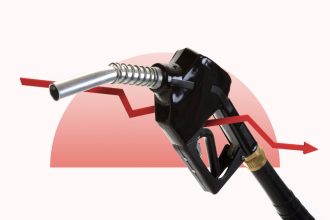Goodboy Picture Company/Getty Images
Key takeaways
-
While credit card interest rates have fallen recently, rates are still relatively high, with the average rate at 20.13 percent as of February 2025.
- This level of interest means that not paying your balance in full will result in larger interest charges each month, which can make paying down your debt more difficult.
- To break free of the credit card debt cycle, you have to pay off the debt you have while also avoiding new debts.
Carrying credit card debt is never ideal, but now is an especially expensive time to carry a balance from one month to the next. This is thanks to the last few years of rising interest rates that affected everything from mortgage payments to auto loans and credit card bills. Where credit card accounts assessed interest saw average rates as low as 16.04 percent in 2018, indebted consumers are now paying average rates of 20.13 percent as of February 2025, according to Bankrate’s data.
Unfortunately, there are few ways to escape crushing amounts of debt without paying it off. At the end of the day, breaking the credit card debt cycle requires you to reinvent your relationship with money while learning to think about your debts and expenses in a whole new way. Here are the overarching steps you can take to break that cycle.
Create a monthly budget or spending plan
In order to get out of debt and stay out, your first course of action should be creating a plan for where your money goes each month. For example, you can sit down to write out a monthly budget that shows your income and all your required and estimated expenses in any given month. You can also try budgeting with one of the best budgeting apps, which can simplify the process.
Either way, your monthly budget should:
- Set limits for discretionary spending categories like food and entertainment.
- Create a plan for your debt payments each month that has you paying more than the minimum.
- Leave some room for savings each month.
Our guide to how to make a budget explains how you can get started, which includes methods of calculating your income, tracking your spending, setting your priorities, creating your spending plan and adjusting your budget as the months progress.
Stop using credit cards for purchases
In order to dig your way out of credit card debt, you need to stop putting dirt on the pile. This means not using credit cards for purchases and minimizing spending while you focus on your debt repayment goals.
This is much easier to accomplish when you have a clear idea of your average spending and financial needs. A budget is your best friend for getting out from under debt.
Consolidate debts you already have
While creating a monthly budget and halting the use of credit cards can go a long way toward helping you escape the credit card debt cycle, debt consolidation tools can also help. By consolidating debt, you get the chance to decrease the number of bills you pay each month and potentially get a lower interest rate.
For example, you can consolidate debt with a 0 percent APR credit card that lets you pay down debt with no interest for up to 21 months. However, variable interest rates apply after this introductory period, so you’ll want to have a repayment plan to ensure you can pay off your debt on time. Also, balance transfer fees (usually 3 percent or 5 percent of the debt transferred) may apply any time you transfer credit card debt from one card to another.
You can also consolidate debt with a personal loan that gives you a fixed interest rate, a fixed monthly payment and a set repayment period that you’ll agree to upfront. Since personal loan rates are lower (on average) than credit card interest rates, this strategy can help you simplify debt repayment with lower interest charges along the way.
Look for additional earning opportunities
Another way to break the credit card debt cycle involves earning more money — at least for a while. After all, bringing in more cash gives you more wiggle room to keep up with regular bills while paying down debt. If you boost your earnings a lot, you can even begin increasing your debt payments month after month.
How can you earn more money? There are many strategies to boost earnings, including picking up a side hustle, looking for a part-time job, asking for a raise or selling items around your house that you don’t really need.
Build up an emergency fund
It’s hard to stay out of debt when you don’t have savings: any “surprise” or emergency expense can automatically send your finances into a tailspin. To get out of debt and stay out, you’ll want to slowly save up at least three to six months of expenses in an emergency fund.
While that seems like a lot of money to save, you can start small by trying to save $500, then $1,000, then $3,000 or more over time. This should get easier as you pay down debt, and having savings can help you avoid racking up new debts during the journey.
The bottom line
To break the credit card debt cycle you’re currently in, you’ll need to find a way to pay off the debts you have while avoiding new bills. The best way to do this involves creating a monthly budget, consolidating your debts to pay them off faster, building an emergency fund and not using credit cards for spending in the short-term.
You can do all of this on your own, but you certainly don’t have to: If these steps feel overwhelming and you know you need outside help, consider reaching out to a reputable nonprofit organization that offers debt relief solutions.
Read the full article here














